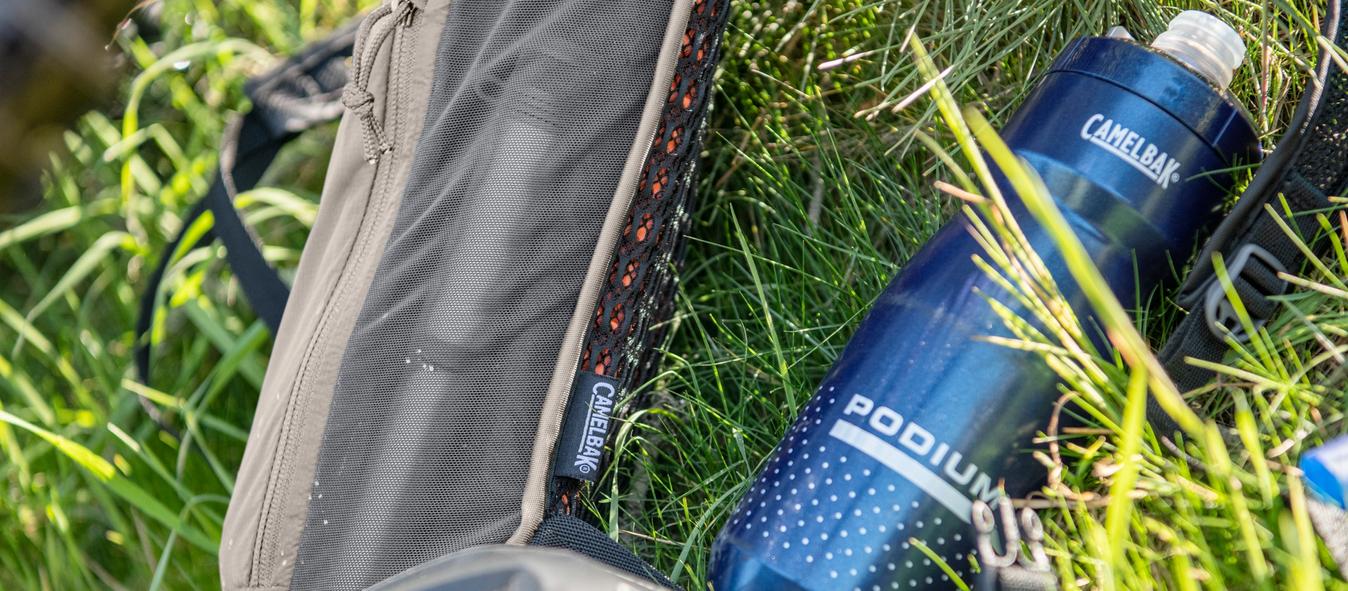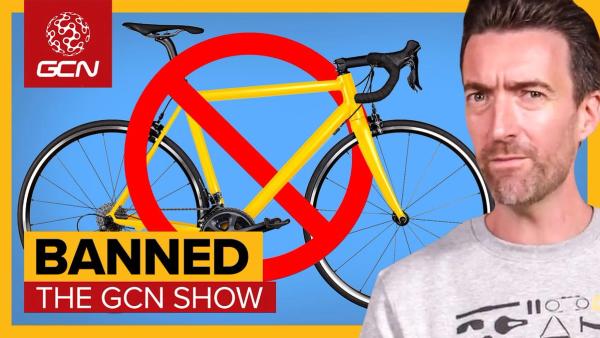© CamelBak
GCN PARTNER
CamelBak
CamelBak is an outdoor equipment company specialising in hydration and carrying solutions. Based in California in the United States it also supplies protective gear and equipment to the US military

CamelBak
- Headquarters Petaluma, California, US
- CEO Greg Williamson
- Founded 1989
- Website https://www.camelbak.eu/
History
The idea behind CamelBak came from a pretty basic human requirement - the need for water, or more specifically the need to stay properly hydrated on a big ride. When founder of the company Michael Eidson was competing in a gruelling 100-mile road race across Texas in the middle of a very hot summer in 1989 he soon realised he needed a way to carry and access water while riding. There weren't many places along the route to stop and fill up and time was of the essence.
Thanks to Michael's professional background as a medical technician he was able to fashion a solution to his problem by filling an IV bag with water and putting that bag it into an ordinary tubular sock. He then placed the sock in the back of his jersey and pulled the IV’s tube over his shoulder, securing it with a safety pin. This allowed him to take on board water while keeping his hands on the bars.
Off the back of his experience in that race he created the company CamelBak and looked to fully develop the first hands-free hydration solution.
A few years later the company hired the talents of Jeff Wemmer, an early adopter of the CamelBak product who had been selling them at races he attended. Once on the CamelBak team he travelled around many bike shops from Florida to California, pitching the product and helping grow the brand.
Since those early the days the brand has evolved and is now one of the leading manufacturers of multiple hydration and carrying solutions. It is very much focussed on providing sustainable solutions with a mission that includes a future without single-use plastic water bottles.
Key Moments
1991
The CamelBak Bite Valve is patented. This is made from one-piece of silicone and requires the user to lightly bite to release water flow. It then self-seals after each drink which means no annoying drips. It’s the same self-sealing design used in products today.
1996
CamelBak release the iconic M.U.L.E pack, which features a narrower design than traditional packs. It hits the sweet spot between size and storage. It’s a lightweight design but can hold three litres of water and enough snacks and gear for a day’s ride. It has evolved over the years but is still one of CamelBak’s top products.
2008
The first wearable hydration garment with an integrated reservoir is launched. It’s essentially a zip up vest with a mesh compartment on the rear to hold a small reservoir.
CamelBak Products

CamelBak has a wide range of hydration and carrying solutions that cater for cyclists, hikers, runners, campers and those taking part in snow-based activities. They include:
Water Bottles - Vacuum insulated stainless steel water bottles and BPA-Free plastic water bottles
Drinkware - Tumblers, travel mugs, cocktail shakers
Packs - Hydration packs, everyday carry packs, lumbar packs, commuter packs
Coolers - Cool bags with reservoirs
Accessories - Bottle brushes, hoses, washer tablets, tea strainers, straws and more
Pro Cycling
Current Sponsors
Team Twenty24 - Gravel/Road Racing
Lapierre Zipp Collective - Enduro/Gravity MTB
Nukeproof-Sram Factory Racing - Enduro/Gravity MTB
Amity Rockwell
Marcelo Gutierrez
Ali Terick
Rémy Métailler
Top CamelBak Stories

How to properly clean your water bottles
Cleaning your bottles properly is an important step in keeping them hygienic for use

GCN goes gravel racing: Si Richardson takes on cycling's toughest gravel series in the world
How will Si fair when he enters the first round of the LifeTime Grand Prix gravel series at Sea Otter in California?

Why are cyclists often banned from public areas? - The GCN Show
From bike paths being closed to cyclists being barred from pedestrianised areas, Dan Lloyd and Si Richardson consider the dehumanisation of those on two wheels
Subscribe to the GCN Newsletter
Get the latest, most entertaining and best informed news, reviews, challenges, insights, analysis, competitions and offers - straight to your inbox
